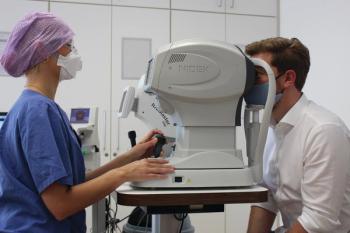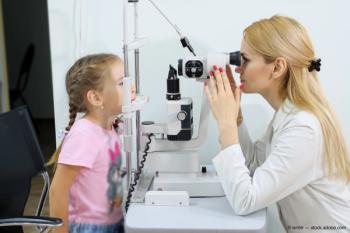
Evidence shows that higher corneal sensitivity may be associated with pain phenotypes, such as the presence of chronic pain involving the trigeminal system.

Evidence shows that higher corneal sensitivity may be associated with pain phenotypes, such as the presence of chronic pain involving the trigeminal system.

New serological biomarkers could characterise Sjögren’s syndrome better than traditionally used autoantibodies.

Ex vivo experiment identifies potential benefit for supplementary oxygen.

Exploring subtleties helps ophthalmologists understand postoperative surprises.

Scanning laser ophthalmoscopy offers improved view of posterior segment.

A 48-year-old male patient presented to an ophthalmic emergency department with what was described as progressive bilateral corneal melting 5 weeks after he received the first dose of a COVID-19 vaccine.

Newly developed acrylic implant provides option for patients with endothelial dysfunction.

One ophthalmologist provides her pearls for managing cases of prolapsed iris and reconstructing it following trauma.

It is widely accepted that patient selection is the key to success with premium IOLs. However, with care, premium IOLs can be implemented in challenging cases.

Customised myopic LASIK using automated ray tracing optimisation has the potential to offer improved and more predictable outcomes, a study shows.

Studies show that corneal crosslinking could be a beneficial treatment in paediatric patients with keratoconus.

Topography-guided treatments for irregular corneas can improve patients’ best corrected visual acuity. The technique is easy to plan and perform, supported by software to do the calculations.

Topography-guided PRK, with or without the addition of corneal crosslinking, can improve visual acuity and quality in patients with keratoconus.

Cyclosporine for dry eye disease appears to be efficacious at all levels and the choice of which formulation to use usually depends on tolerability and affordability. Tolerability hinges primarily on the vehicle, which varies among different products.

In recent years, ophthalmologists have seen several new therapeutics for the treatment of dry eye disease.

The vicious cycle theory is a new way of understanding dry eye disease and may help improve prevention and treatment strategies.

In this roundtable, members of the Ophthalmology Times Europe® Editorial Advisory Board consider the top challenges and opportunities that they anticipate will affect ophthalmology in Europe in 2021.

A multifocal corneo-scleral contact lens that can correct presbyopia in irregular corneas has undergone a small pilot study. Complete visual rehabilitation was achieved along with a high degree of patient satisfaction.

The possibility of taking precise measurements of total corneal astigmatism enable more patients to be spectacle-free following cataract surgery.

Until we have a vaccine and see a reduction of COVID-19 cases down to zero, we must adjust and take every precaution possibly to protect our staff, as well as our patients.

Emerging data on conjunctivitis cases in COVID-19 patients necessitate high levels of caution and a meticulous approach during the pandemic.




Early identification, aggressive treatment critical; when to consider surgical intervention